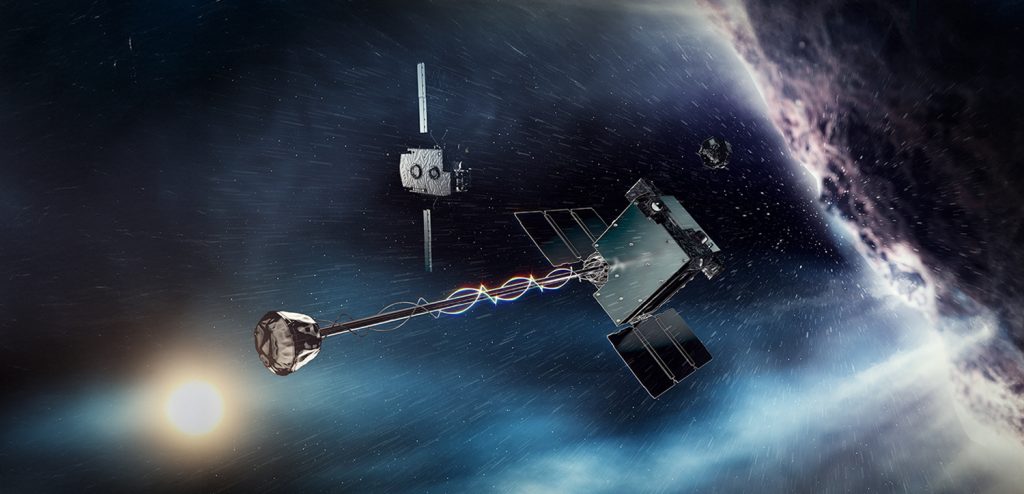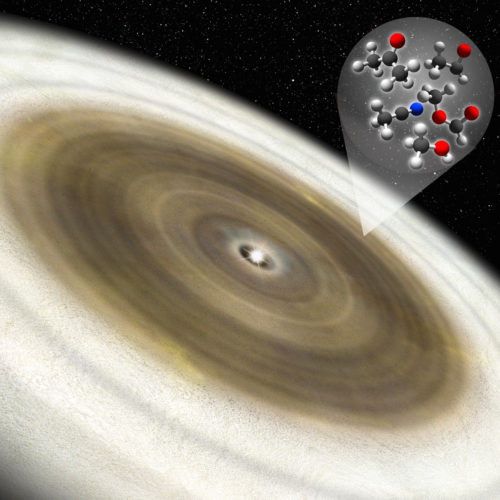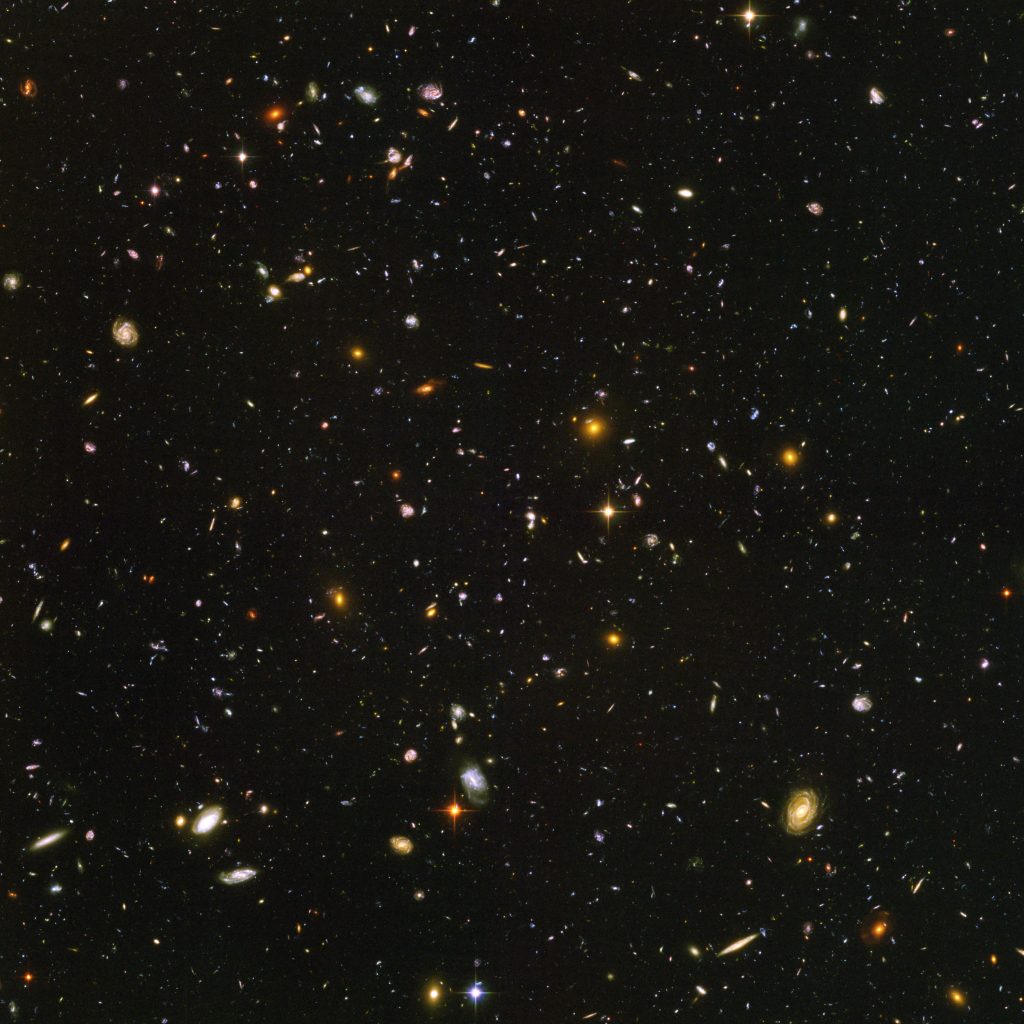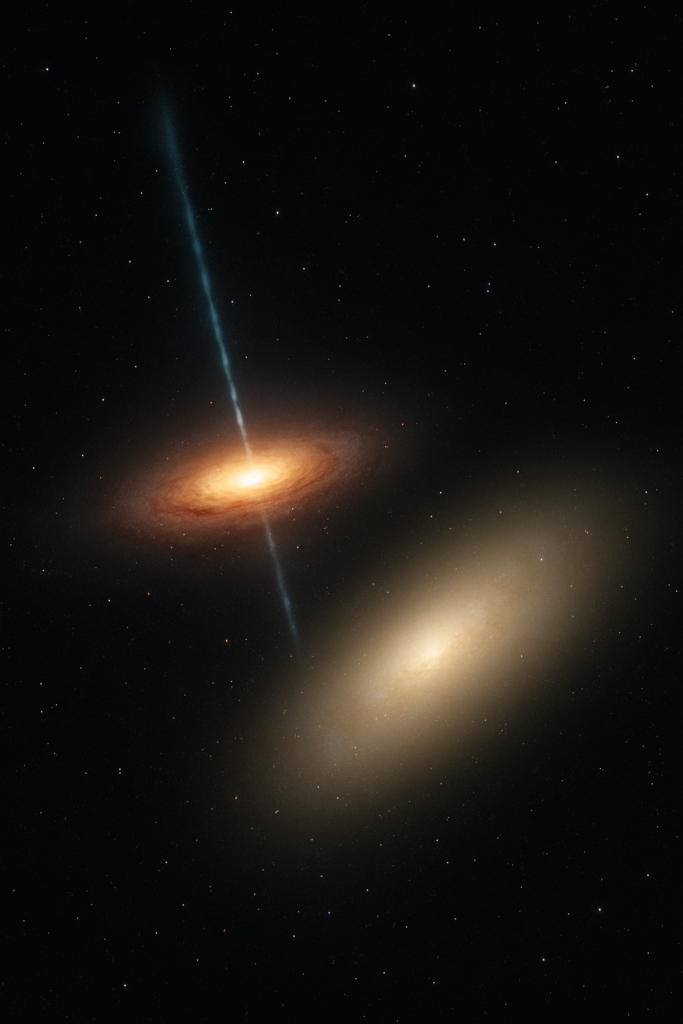We are happy to announce that our researchers at the IEA have been awarded observing time as PIs for ALMA Cycle 12! You can read about the projects and the exciting science that will follow here.

Dr. Bin Yang has been awarded observing time for the project: Primitive Dust and Activity in Comet C/2024 E1 with ALMA.
Primitive Dust and Activity in Comet C/2024 E1 with ALMA
Detailed studies of comets to date have focused almost exclusively on short-period objects that have undergone significant thermal evolution. ESA’s upcoming Comet Interceptor (CI) mission will, for the first time, encounter a pristine long-period comet (LPC), offering a rare opportunity to study unprocessed material from the outer Solar System. Comet C/2024 E1 is a bright LPC and a timely analog for the CI target. Currently monitored by JWST, E1 offers a rare chance to characterize the evolution of its activity and composition as it approaches the Sun. We obtained ALMA time to perform multi-band observations (3, 4, 6, and 7) near perihelion, a period when JWST and other optical are constrained by solar elongation, to detect thermal emission from mm- to cm-sized grains and measure gas production rates. These timely observations will constrain grain size distribution, gas-to-dust ratios, and mass-loss rates, revealing key drivers of comet activity and providing critical coverage of its temporal evolution near perihelion. ALMA will provide a valuable complement to JWST and ground-based data, shedding light on the building blocks of planets and the early evolution of the Solar System.
Dr. Lucas Cieza has been awarded observing time for the project: An ALMA and JWST-MIRI line survey of FUor objects: the chemistry revealed by stellar outbursts.
An ALMA and JWST-MIRI line survey of FUor objects: the chemistry revealed by stellar outbursts
Episodic accretion is one of the characteristic features of young stellar objects. The luminosity outbursts associated with strong episodic accretion events are known to affect the chemistry and mineralogy of protoplanetary disks, but their effects are still not well understood. Luminosity outbursts also sublimate the ice reservoirs in the outer disk, revealing the composition of volatiles that otherwise would be trapped on ice mantles. These are the locations where icy planetesimals usually form and therefore are critically important to understand the composition and chemistry of extrasolar giant planets. Outbursts are also believed to play a central role in the thermal annealing of amorphous silicate to crystalline grains and might explain the high level of crystallinity seen in comets. Here we propose a synergic ALMA and JWST-MIRI line survey of three FUor objects to achieve the following science goals:
— study the chemistry and element ratios (C/O in particular) across the disks
— investigate the distribution of water and Complex Organic Molecules
— study the formation of crystalline material (e.g., forsterite) through thermal annealing.
The program includes 13 hs of ALMA time and 6 hs of JWST-MIRI time.
The UDP team also includes: Grace Batalla-Falcon, Trisha Bhowmik, Prachi Chavan, Camilo Gonzalez, Alice Zurlo, and Bin Yang.


Dr. Manuel Aravena has been awarded observing time for the projects:
— PHOENIX Large ALMA Program
— HIDING in the HUDF
PHOENIX Large ALMA Program
The PHOENIX ALMA Large Program is a transformative international collaboration aimed at understanding the formation and evolution of the earliest galaxies in the universe (PI: S. Schouws; co-PI: M. Aravena). Focusing on a representative sample of 15 luminous galaxies at redshifts z=8–15, PHOENIX will map their [O III] 88 μm emission and dust continuum using ALMA, building on recent breakthroughs from JWST. By combining ALMA and JWST data, PHOENIX will constrain the total star formation rates in early galaxies, including the obscured component invisible to optical/UV surveys; explore the origin and growth of cosmic dust in the first billion years; characterize the interstellar medium (ISM) conditions using powerful line diagnostics; and probe kinematics, outflows, and the possible presence of extended halos of ionized gas. This program offers exceptional opportunities for students to lead frontier research in galaxy evolution, ISM physics, early dust formation, and ALMA/JWST data analysis.
HIDING in the HUDF
The HIDING (HIgh-definition Dust Imaging of Normal Galaxies) ALMA Large Program is an ambitious observational effort designed to revolutionize our understanding of galaxy formation and evolution during Cosmic Noon (z~1.5–3; PI: L. Boogaard; co-PI: M. Aravena). HIDING targets a complete, flux-limited sample of 18 typical main-sequence galaxies identified in the renowned Hubble Ultra Deep Field (HUDF), leveraging ALMA’s unprecedented sensitivity and resolution. Key objectives of HIDING include: Resolving the spatial distribution of cold dust and gas in galaxies at cosmic noon, crucial to understanding how and where star formation occurs; obtaining high-resolution (0.1–0.2″ or ~1 kpc) dust continuum images to study galaxy morphologies, structural parameters, and dust profiles; testing whether star formation laws and structural properties of galaxies observed locally hold true at high redshifts, thus critically informing cosmological simulations; combining ALMA dust observations with existing, unmatched JWST and HST data to construct spatially-resolved stellar mass, star formation rate (SFR), and dust extinction maps, breaking key degeneracies in galaxy modeling, quantifying resolved star formation scaling relations at high redshift, providing pivotal constraints for galaxy evolution theories and simulations. Students joining the HIDING project will have a unique opportunity to contribute to cutting-edge research on galaxy evolution, star formation processes, and multi-wavelength astronomical imaging analysis. They will collaborate closely with an international team of astronomers and theorists, working with rich datasets from ALMA, JWST, and HST.
Dr. Kseniia Telikova has been awarded observing time for the projects:
— Linking gas in absorption and emission at the smallest impact parameters: Extremely Strong DLAs at high redshift
— Dynamics and molecular content of interacting quasar-galaxy systems
Linking gas in absorption and emission at the smallest impact parameters: Extremely Strong DLAs at high redshift
Damped Lyman-alpha absorbers (DLAs) trace the bulk of neutral gas in the Universe. Observations and simulations suggest an anti-correlation between the neutral hydrogen column density, N(HI), of DLAs and the impact parameter to their host galaxies. Recent ALMA studies have made great progress in detecting CO and [CII] emission from z>2 DLA hosts, but most correspond to massive galaxies at large impact parameters (14-60 kpc), inconsistent with the N(HI)-impact parameter relation predicted by simulations. Extremely Strong DLAs (ESDLAs), with N(HI)>5×10^21 cm^-2, constitute the high end of the N(HI) distribution. In contrast to regular DLAs, ESDLAs are expected to probe gas at very small galactocentric radii, < 3 kpc, yet remain unexplored with ALMA. We propose a pilot study of [CII] emission associated with seven z~3 ESDLAs using ALMA Band 8. Selected solely on high N(HI), these systems span a representative range of properties. These observations will enable us to uncover the nature of galaxies giving rise to the highest column density absorbers and test the predictions from galaxy formation models about DLA-galaxy association at the smallest impact parameters.
The program includes 13h of ALMA time.
Dynamics and molecular content of interacting quasar-galaxy systems
Quasars are among the most energetic yet enigmatic objects in the Universe and are thought to be triggered by cold gas supply through major galaxy mergers. We propose spatially and kinematically resolved ALMA observations of molecular gas in quasargalaxy systems, targeting CO(43) or CO(54) emission lines in Band 4 at ~0.5 resolution. Our targets are selected from a sample of proximate absorption systems identified in optical quasar spectra, with clear signs of rich environments: (a) deep PSF-subtracted Subaru imaging reveals a nearby companion galaxy within ~1 of the quasar, or (b) CO(32) emission is detected, confirming the presence of molecular gas, albeit at coarse resolution. ALMA will provide unique insights into quasargalaxy interactions at high redshift, allowing us to test the merger-driven quasar formation scenario and assess whether quasars exert positive feedback through gas compression or negative feedback by depleting molecular gas.The program includes 29h of ALMA time.


Dr. Chiara Mazzuchelli has been awarded observing time for the project: Dust properties of quasars with powerful radio-jets in the 1st Gyr of the Universe.
Dust properties of quasars with powerful radio-jets in the 1st Gyr of the Universe
Radio-jets are thought to play a key role in shaping the host galaxy/black hole co-evolution in AGN, via radio-mode feedback. This process at the highest redshift, where feedback is invoked to be crucial, is of particular interest. Currently, ~1mm observations of dust and cool gas in a sample of radio-loud quasars started to probe this mechanism at z>5. However, the single continuum flux density measurement available obliges to apply over-simplified modeling of dust emission, with substantial uncertainties in dust properties and star formation rates. Here, we propose to obtain band 8 and 9 observations of 12 radio-loud quasars at z>5, to properly sample the peak of the dust emission. Together with available ~1mm data, these new datasets will allow for accurate estimates of dust masses, temperatures, emissivity indices and SFR. We will compare them to radio-quiet quasars at similar redshifts, and probe the role of jets in injecting negative (or positive) feedback in the galaxies. This will be the first systematic studies of dust properties in massive galaxies with powerful radio emission at Cosmic Dawn, and will shine a new light on radio-jets-ISM interaction at extreme redshifts.
